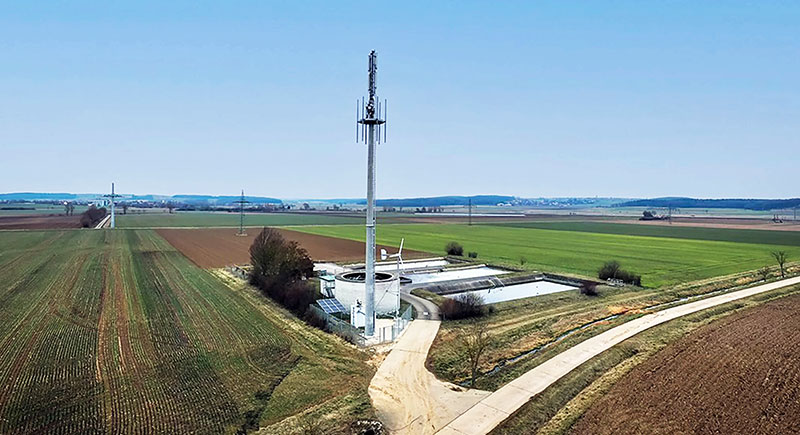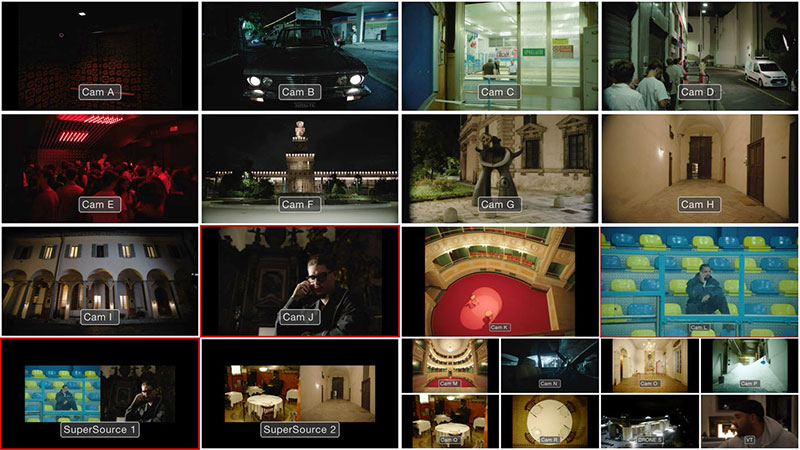5G partners joined to trial live video transmissions using single and bonded modems, transmitted over 5G slices dynamically configured according to real-time analysis.

In a first of its kind demonstration, 5G partners have joined their expertise to trial live video transmissions using single and bonded modems. These streams were transmitted over 5G slices that were automatically and dynamically configured according to real-time analysis. The partners involved were LiveU, L.M. Ericsson, Nokia and the University of Patras (UoP) in Greece, under the Horizon Europe 5G-Solution project.
Slicing is considered one of the most promising processes to come out of 5G Stand-Alone (SA) networks, and refers to the ability to guarantee a level of performance, or QoS, as high as possible to authorised users, entirely within the cellular radio and Core network. If service providers were able to make such a guarantee, then QoS-dependent applications like live uplink video transmission for event coverage – for news, sport, concerts and so on – would have a higher probability of receiving the needed performance for optimum signal stability on location.
Nevertheless, how these slices can be allocated and managed, and how a 5G cellular operator can provide the QoS level it guarantees to multiple broadcasters over a specific slice in a certain location, are still to be determined.
Baruch Altman, Head of 5G Technology Projects at LiveU, said, “One of the technical obstacles to the wide deployment of slices is the static/fixed allocation of resources (spectrum, QoS within the network borders), while managing slice allocation dynamically, per-demand. The process has not been automated yet. Hence the theoretical benefits of 5G for remote production at scale have up to now not been fully realised.”

In this trial, transmitting over 5G slices that were automatically set-up according to real-time analysis was achieved using several LiveU multi-cam LU800 field units and a network management process called Zero-Touch-Automation (ZTA). Each unit transmitted up to four independent camera feeds simultaneously by bonding multiple modems, networks or slices. One of the slices had been configured specifically for broadcasters’ uplink video contribution. The ZTA mechanism dynamically allocated 5G slices in real-time, according to the LiveU units’ transmission needs and the network load overall.
The network used for the trial was deployed by UoP, the ZTA mechanism was designed by Ericsson, and the network management orchestrator (CDSO) was developed by Nokia. The ZTA identified, in real-time, changes in the network performance resulting from the increased upload demand. It then notified the CDSO, which drove the reconfiguration of the network by setting up a special upload-oriented slice. Modems in the LiveU units automatically identified the newly available special slice, started using it, and LiveU bonding algorithms began transmitting live video packets using this dedicated slice.
Bonding this slice with the ‘best-effort’ slices or commercial networks allowed each of the LU800s to transmit four video streams concurrently and at a high quality, with stable bandwidth and latency. Bonding special slices, in real-time, with other modems, networks and bandwidths was instrumental in maintaining video continuity and overall QoS throughout and to reduce the spectrum needed for the new slice.
This trial further demonstrated that even with adaptive ZTA of dedicated ‘guaranteed performance’ slice allocation, transparently and agnostically bonding multiple modems, networks and slices is needed so that broadcasters can access high levels of video quality and reliability in these congested areas, under changing conditions and over varying network configurations.
Baruch Altman said, “These pioneering tests demonstrated how remote production can benefit from real-time, adaptive 5G/6G end-to-end dedicated slice allocation with the highest QoS possible. Currently, only a limited range of devices – like LiveU’s field units used here – can make optimal use of new 5G capabilities and convert them to immediate value for customers, while supporting network operators’ need for efficient operations.” www.liveu.tv




















